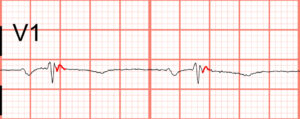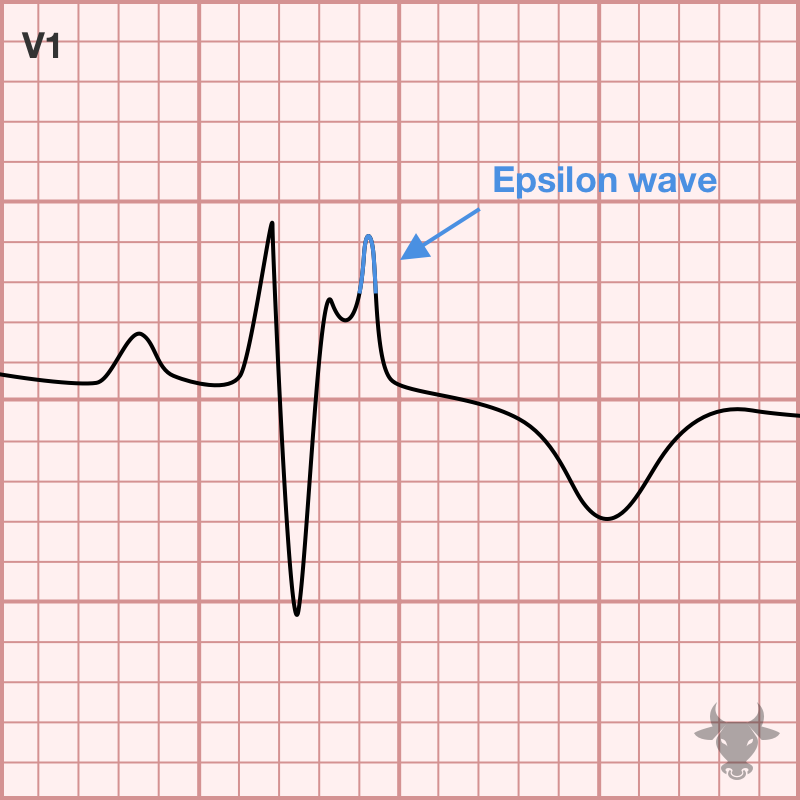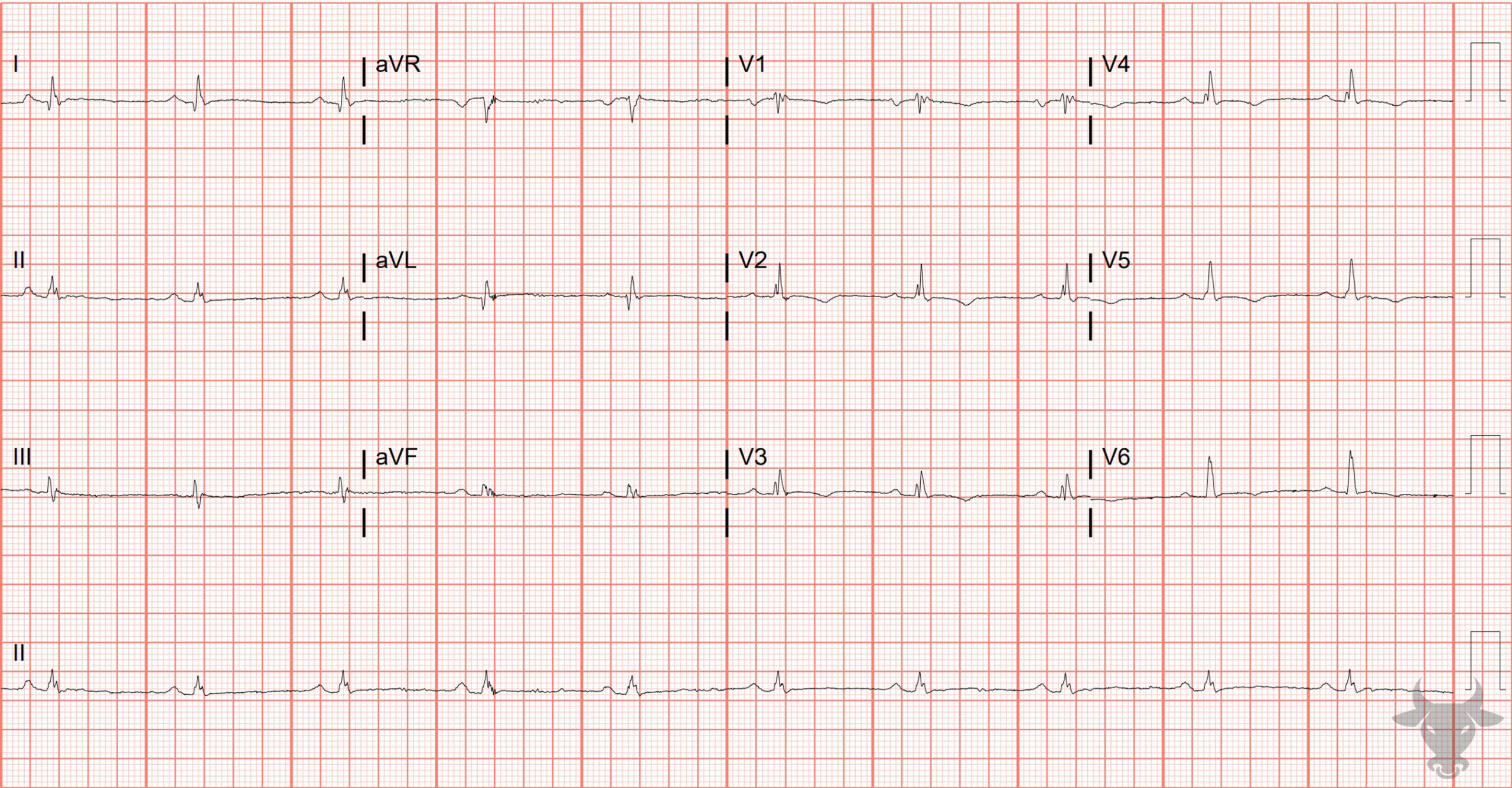ARVC is an inherited and progressive condition characterized by structural abnormalities in the right ventricle that predispose to ventricular arrhythmias and sudden cardiac death. The condition is more common in males, and usually discovered during adolescence. While Epsilon waves (terminal notches near the end of the QRS complex) and are the most specific finding, they are a late finding of fibrofatty infiltration of ventricular myocardium (occurring in only 30% of patients diagnosed with ARVC), and represent fragmented conduction through islands of surviving myocardium.

Epsilon waves in V1 highlighted in red.
T wave inversions, present in up to 85% of patients, are the most sensitive finding and are generally found in the right precordial leads. Other electrocardiographic findings include incomplete and complete right bundle branch block. Diagnosis is confirmed via magnetic resonance imaging, and treatment includes antiarrhythmics and implantable defibrillators.


